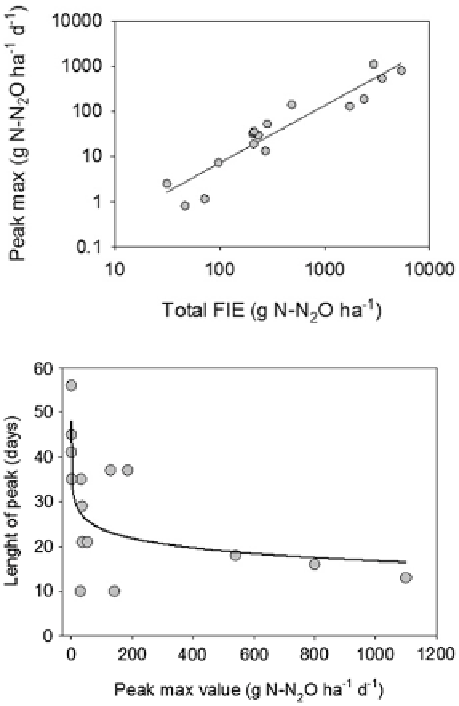Environmental Engineering Reference
In-Depth Information
which stimulates evapotranspiration, and relatively low rainfall during the spring-
summer periods, tends to maintain soils moisture well below 60 % of water filled
pore space (WFPS), value of water saturation at which N
2
O emissions increase
exponentially in non limiting conditions of N availability (Davidson
1993
). Even
when crops are irrigated, the water input is calibrated for plant needs and, in par-
ticular for well drained soils, soil water content remains relatively low, except in
the few minutes following irrigation or rainfall. Higher EFs might be expected for
winter crops, when rain frequency and total monthly input increases while EPT
decreases, although experimental evidence is needed to confirm this hypothesis.
The Turin site was the sole field where WFPS was between 66 and 80 % during
fertilization, which would explain the observed high fluxes.
Maximum N
2
O emission values, obtained at flux peaks, were correlated
with the magnitude of total FIE (Fig.
9.3
), whereas an inverse relationship was
observed between the length of the fertilizer induced emission period and the max-
imum flux peak (Fig.
9.4
). Data indicate that high emissions are obtained only at
Fig. 9.3
Maximum emission
rate (g N
2
O-N ha
−
1
)
versus total fertilizer induced
emission (g N
2
O-N ha
−
1
d
−
1
)
Fig. 9.4
Length of the
fertilizer induced emission
period (days) versus
maximum N
2
O emission rate
(g N
2
O-N ha
−
1
d
−
1
)

